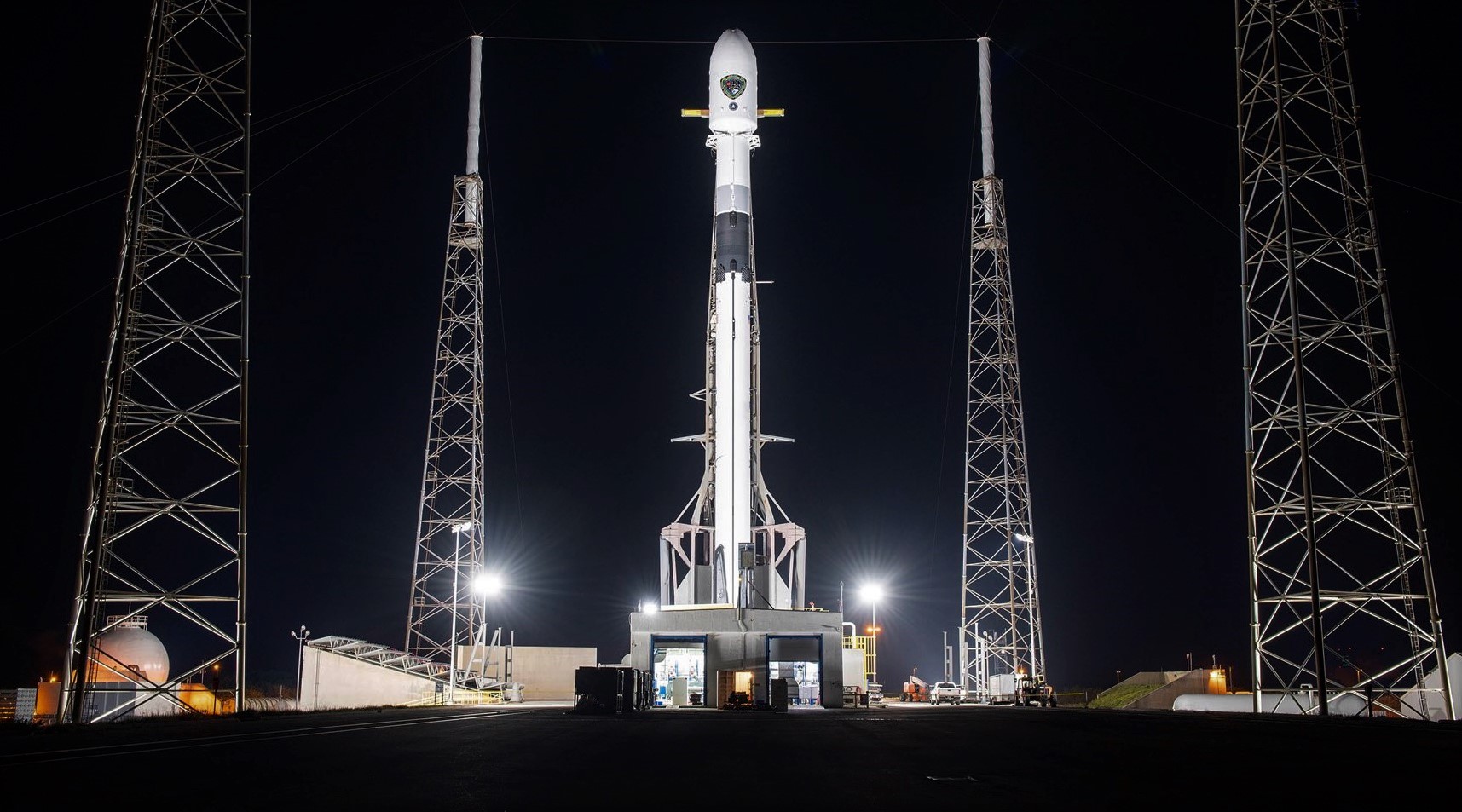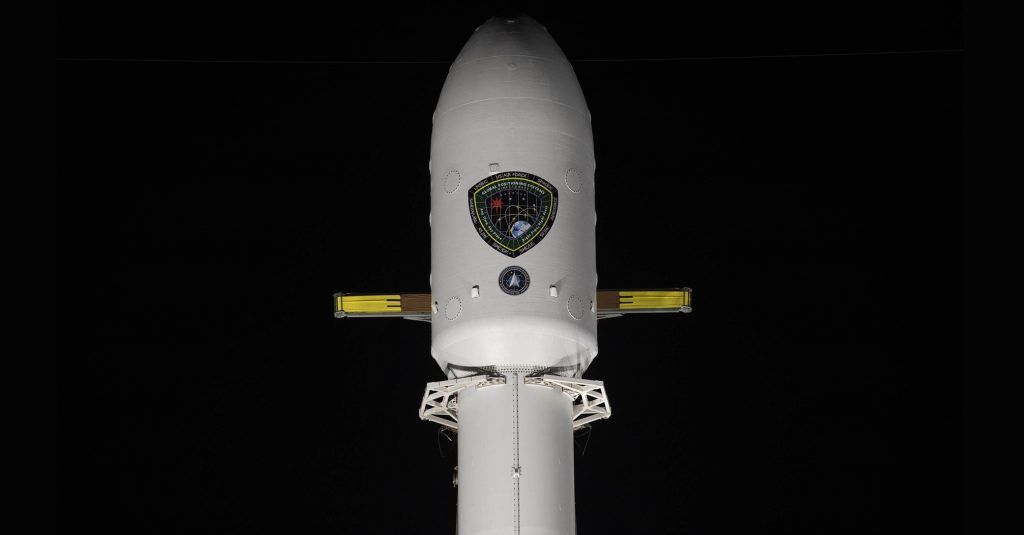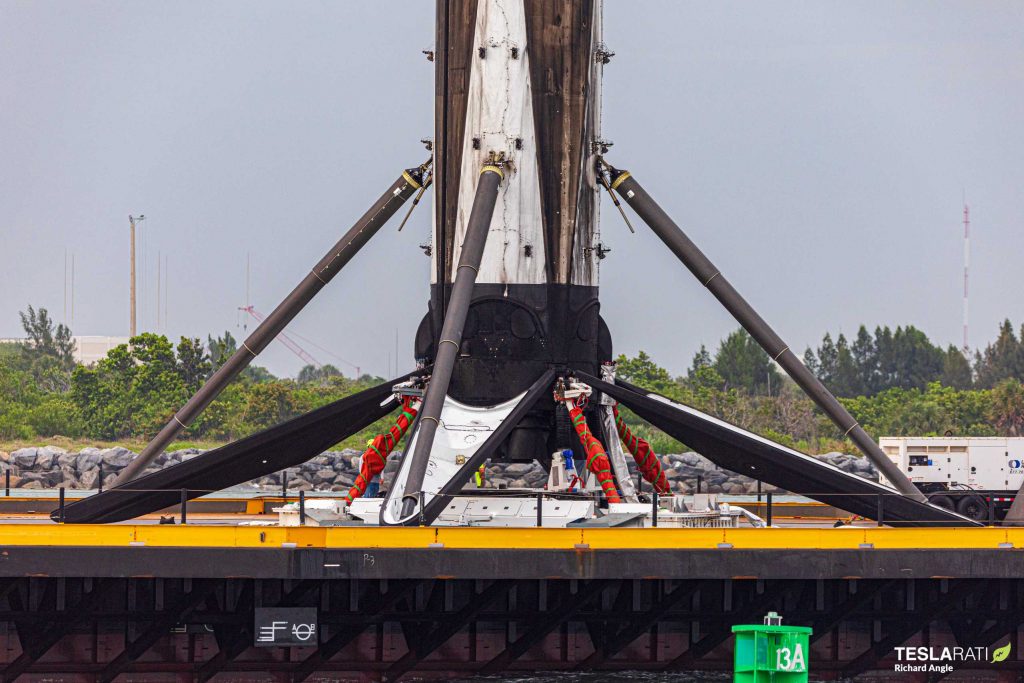

News
SpaceX set for rocket recovery first after US military satellite launch
A SpaceX Falcon 9 is set to become the first commercial rocket to attempt to land after an operational launch for the US military, potentially paving the way for an even more significant milestone somewhere down the road.
Featuring brand new booster B1060 and a new upper stage and payload fairing, Falcon 9 is scheduled to launch the US military’s third upgraded GPS III satellite (PS III SV01) no earlier than (NET) 3:55 pm EDT (19:55 UTC) on June 30th. While it will be the second time a Falcon 9 Block 5 rocket has lifted off from Cape Canaveral Air Force Station (CCAFS) Launch Complex 40 (LC-40) with a GPS III satellite in tow, the mission will mark a critical first for SpaceX and the US military. For the first GPS III mission, the US Air Force somewhat inexplicably required SpaceX to expend the new Falcon 9 booster assigned to the December 2018 launch.
The US military never offered a technical explanation for why Falcon 9 couldn’t land after launching a ~3900 kg (~8600 lb) GPS III SV01 to a medium orbit but could, for example, land after launching a dozen metric tons and two NASA astronauts. Regardless, the US Air Force Space and Missile Systems Command (SMC) has decided that SpaceX can now attempt to land Falcon 9’s first stage during the company’s second GPS III launch. A step further, on the eve of the mission, SMC has revealed that it may even be opening up to the idea of reusing SpaceX boosters on future military launches.

Falcon 9 B1060 has a 15-minute window to launch the GPS III SV03 spacecraft on Tuesday, June 30th. Meanwhile, drone ship Just Read The Instructions (JRTI) – heading out to sea to prepare for B1060’s attempted landing – recently passed just a few miles from drone ship Of Course I Still Love You (OCISLY) – returning to Port Canaveral after SpaceX decided to delay its ninth Starlink v1.0 launch from June 23rd. 25th, and 26th to the first or second week of July.
JRTI arrived at its post ~630 km (~390 mi) East of the Florida Coast on June 29th, around 36 hours before liftoff.
Drone ship JRTI was recently recommissioned after extensive upgrades and a several thousand mile move from Port of Los Angeles, California to Port Canaveral, Florida, ultimately supporting its first East Coast booster landing and recovery barely three weeks ago. If successful, B1060 will become the first orbital-class booster ever to land after an operational US military launch, excluding a number of Space Shuttle missions in the 1980s.

According to reporting by Space News’ Sandra Erwin, it’s unlikely that SpaceX will reserve Falcon 9 booster B1060 – assuming a successful landing – for reuse on a future US military launch. Given that SMC appears to have even stricter requirements than NASA’s Commercial Crew (CCP) and Commercial Resupply Services (CRS) programs, it’s safe to assume that – like NASA – the US military will only initially allow booster reuse if said booster has only flown missions for the agency. Given that Falcon 9’s next known US military launch (GPS III SV04) is NET “late 2020” and that there “are currently no plans to use a previously-flown booster on any future GPS launches”, it’s unlikely that SpaceX will waste a perfectly good booster by saving it for 6-18+ months.
Regardless, as usual, SpaceX will host an uninterrupted webcast of the launch. Tune in around 15 minutes prior to catch SpaceX’s third launch of the month and 11th of the year.
Check out Teslarati’s Marketplace! We offer Tesla accessories, including for the Tesla Cybertruck and Tesla Model 3.
News
Tesla cleared in Canada EV rebate investigation
Tesla has been cleared in an investigation into the company’s staggering number of EV rebate claims in Canada in January.

Canadian officials have cleared Tesla following an investigation into a large number of claims submitted to the country’s electric vehicle (EV) rebates earlier this year.
Transport Canada has ruled that there was no evidence of fraud after Tesla submitted 8,653 EV rebate claims for the country’s Incentives for Zero-Emission Vehicles (iZEV) program, as detailed in a report on Friday from The Globe and Mail. Despite the huge number of claims, Canadian authorities have found that the figure represented vehicles that had been delivered prior to the submission deadline for the program.
According to Transport Minister Chrystia Freeland, the claims “were determined to legitimately represent cars sold before January 12,” which was the final day for OEMs to submit these claims before the government suspended the program.
Upon initial reporting of the Tesla claims submitted in January, it was estimated that they were valued at around $43 million. In March, Freeland and Transport Canada opened the investigation into Tesla, noting that they would be freezing the rebate payments until the claims were found to be valid.
READ MORE ON ELECTRIC VEHICLES: EVs getting cleaner more quickly than expected in Europe: study
Huw Williams, Canadian Automobile Dealers Association Public Affairs Director, accepted the results of the investigation, while also questioning how Tesla knew to submit the claims that weekend, just before the program ran out.
“I think there’s a larger question as to how Tesla knew to run those through on that weekend,” Williams said. “It doesn’t appear to me that we have an investigation into any communication between Transport Canada and Tesla, between officials who may have shared information inappropriately.”
Tesla sales have been down in Canada for the first half of this year, amidst turmoil between the country and the Trump administration’s tariffs. Although Elon Musk has since stepped back from his role with the administration, a number of companies and officials in Canada were calling for a boycott of Tesla’s vehicles earlier this year, due in part to his association with Trump.
News
Tesla Semis to get 18 new Megachargers at this PepsiCo plant
PepsiCo is set to add more Tesla Semi Megachargers, this time at a facility in North Carolina.

Tesla partner PepsiCo is set to build new Semi charging stations at one of its manufacturing sites, as revealed in new permitting plans shared this week.
On Friday, Tesla charging station scout MarcoRP shared plans on X for 18 Semi Megacharging stalls at PepsiCo’s facility in Charlotte, North Carolina, coming as the latest update plans for the company’s increasingly electrified fleet. The stalls are set to be built side by side, along with three Tesla Megapack grid-scale battery systems.
The plans also note the faster charging speeds for the chargers, which can charge the Class 8 Semi at speeds of up to 1MW. Tesla says that the speed can charge the Semi back to roughly 70 percent in around 30 minutes.
You can see the site plans for the PepsiCo North Carolina Megacharger below.

Credit: PepsiCo (via MarcoRPi1 on X)

Credit: PepsiCo (via MarcoRPi1 on X)
READ MORE ON THE TESLA SEMI: Tesla to build Semi Megacharger station in Southern California
PepsiCo’s Tesla Semi fleet, other Megachargers, and initial tests and deliveries
PepsiCo was the first external customer to take delivery of Tesla’s Semis back in 2023, starting with just an initial order of 15. Since then, the company has continued to expand the fleet, recently taking delivery of an additional 50 units in California. The PepsiCo fleet was up to around 86 units as of last year, according to statements from Semi Senior Manager Dan Priestley.
Additionally, the company has similar Megachargers at its facilities in Modesto, Sacramento, and Fresno, California, and Tesla also submitted plans for approval to build 12 new Megacharging stalls in Los Angeles County.
Over the past couple of years, Tesla has also been delivering the electric Class 8 units to a number of other companies for pilot programs, and Priestley shared some results from PepsiCo’s initial Semi tests last year. Notably, the executive spoke with a handful of PepsiCo workers who said they really liked the Semi and wouldn’t plan on going back to diesel trucks.
The company is also nearing completion of a higher-volume Semi plant at its Gigafactory in Nevada, which is expected to eventually have an annual production capacity of 50,000 Semi units.
Tesla executive teases plan to further electrify supply chain
News
Tesla sales soar in Norway with new Model Y leading the charge
Tesla recorded a 54% year-over-year jump in new vehicle registrations in June.

Tesla is seeing strong momentum in Norway, with sales of the new Model Y helping the company maintain dominance in one of the world’s most electric vehicle-friendly markets.
Model Y upgrades and consumer preferences
According to the Norwegian Road Federation (OFV), Tesla recorded a 54% year-over-year jump in new vehicle registrations in June. The Model Y led the charge, posting a 115% increase compared to the same period last year. Tesla Norway’s growth was even more notable in May, with sales surging a whopping 213%, as noted in a CNBC report.
Christina Bu, secretary general of the Norwegian EV Association (NEVA), stated that Tesla’s strong market performance was partly due to the updated Model Y, which is really just a good car, period.
“I think it just has to do with the fact that they deliver a car which has quite a lot of value for money and is what Norwegians need. What Norwegians need, a large luggage space, all wheel drive, and a tow hitch, high ground clearance as well. In addition, quite good digital solutions which people have gotten used to, and also a charging network,” she said.
Tesla in Europe
Tesla’s success in Norway is supported by long-standing government incentives for EV adoption, including exemptions from VAT, road toll discounts, and access to bus lanes. Public and home charging infrastructure is also widely available, making the EV ownership experience in the country very convenient.
Tesla’s performance in Europe is still a mixed bag, with markets like Germany and France still seeing declines in recent months. In areas such as Norway, Spain, and Portugal, however, Tesla’s new car registrations are rising. Spain’s sales rose 61% and Portugal’s sales rose 7% last month. This suggests that regional demand may be stabilizing or rebounding in pockets of Europe.
-

 Elon Musk2 weeks ago
Elon Musk2 weeks agoTesla investors will be shocked by Jim Cramer’s latest assessment
-

 Elon Musk2 days ago
Elon Musk2 days agoxAI launches Grok 4 with new $300/month SuperGrok Heavy subscription
-

 Elon Musk4 days ago
Elon Musk4 days agoElon Musk confirms Grok 4 launch on July 9 with livestream event
-

 News1 week ago
News1 week agoTesla Model 3 ranks as the safest new car in Europe for 2025, per Euro NCAP tests
-

 Elon Musk2 weeks ago
Elon Musk2 weeks agoA Tesla just delivered itself to a customer autonomously, Elon Musk confirms
-

 Elon Musk1 week ago
Elon Musk1 week agoxAI’s Memphis data center receives air permit despite community criticism
-

 News2 weeks ago
News2 weeks agoXiaomi CEO congratulates Tesla on first FSD delivery: “We have to continue learning!”
-

 Investor's Corner2 weeks ago
Investor's Corner2 weeks agoTesla gets $475 price target from Benchmark amid initial Robotaxi rollout

















